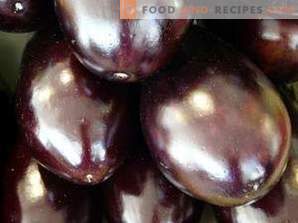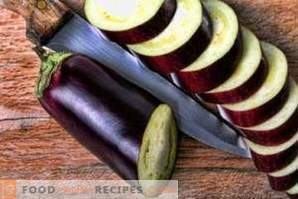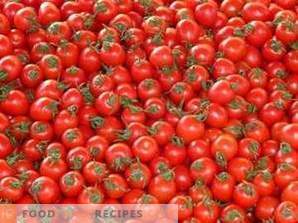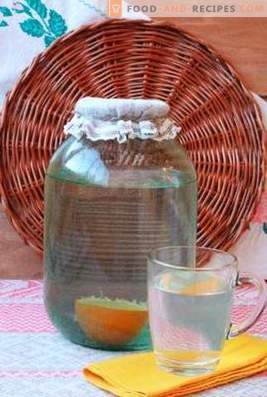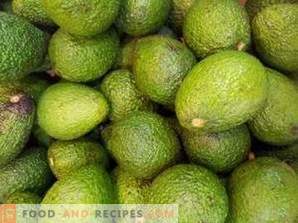
If there are no special problems with the storage of potatoes and onions, then with eggplants everything is much more complicated. Despite the dense skin and impenetrable, at first glance, the kind of “blue”? vegetables are tender. And so that fresh eggplants can be enjoyed in the winter, you need to try.
The second half of summer and autumn is a time when eggplants are actively ripening, and the housewives try not to miss the opportunity to make them blanks for the winter. All the more so from this vegetable you can make a lot of various snacks.
But still the most valuable dishes in which eggplant added fresh. Therefore, the housewives are trying to keep them fresh as long as possible.
When to collect eggplants for storage
Eggplants start to ripen in July.
Young, but already rather large fruits with purple color, shiny peel, and firm flesh with underdeveloped white seeds have the best taste.
If the color of eggplants inherent in this variety begins to lighten, then this indicates that the fruits have reached full ripeness and, oddly enough, are least suitable not only for canning or storage, but also for cooking.
The fact is that as they mature, eggplant accumulates a substance hazardous to human health - solanine, in large quantities being a strong poison.
The presence of eggplant solanine can be determined by cutting the fruit in half. The more darkening of the flesh occurs at the cut, the more solanine is in the fruit. In overripe eggplants, the flesh is no longer dense enough; around hard seeds, voids are formed. These eggplants will be poorly stored, because they will soon become flabby and begin to deteriorate.
In order not to cut the fruit, to determine the degree of its maturity, it is enough to press a finger on its flank. If after pressing a dent remains, it means that the flesh is loose. This eggplant is not used for cooking.
Eggplants are harvested as they mature. For storage it is better to use late varieties. These eggplants are more resistant to disease. And the air temperature is much lower, which also contributes to better preservation of the fruit.
Fully eggplants clean before frost.
How to assemble eggplants
When harvesting, eggplants are not torn off, but neatly cut with a sharp knife, leaving the stem about two centimeters long.
Immediately sorted. All damaged, overripe and sluggish fruits are rejected. Also, eggplants with spots or frostbitten are not suitable for storage or further processing.
If you eat eggplants in clear weather, you should immediately move them to a dark, cool place.
Eggplants to be stored are not washed. You can only gently wipe them with a soft cloth. Contaminated, but the whole fruit is used for cooking. To do this, they, of course, must first be washed.
How to store eggplants in the cellar or basement
Save eggplant to spring without loss is almost impossible. But it is possible to reduce the number of spoiled fruit, if all conditions are created for them in the cellar. The room should be clean, cool, well ventilated.
The optimum air humidity should be 75-85%, and the air temperature should be 3-5 ° of heat.
Method 1. Eggplants stack near the wall on the ground, covered with straw, in a special way. The first row is laid on the straw cuttings down. The second row of fruits is placed in this way: each eggplant is stuck between two fruits of the lower layer. When a small pile is formed, it is covered with bags.
After 10 days they are sorted. The spoiled fruit is removed, and the rest is wrapped in paper and again laid in bulk on straw. But this is done in such a way that the fruits, which were previously located below, were on top.
If on frosty days the temperature in the basement decreases, the eggplants are warmed with old blankets, bags, dry straw.
Method 2. Each fruit is wrapped in a newspaper or soft paper. Put in boxes or boxes with holes for ventilation. Top covered with straw, sawdust, old newspapers, burlap.
How to store eggplants in the apartment
If there is a glazed balcony, where the air temperature even on frosty days does not fall below + 3 °, eggplants can be stored there.
For this purpose, boxes, boxes with openings for free air circulation are used.
As in the cellar, eggplants can be stored in bulk, carefully laying in rows on the straw tails down. Fruits are covered on top to protect from daylight and cold air.
In the absence of a balcony, eggplants are stored in an unheated pantry, where it is dark, cool, and quite humid. To do this, they are wrapped in paper, then placed in several pieces in a plastic bag with holes. In this form, eggplants can last two or three weeks. Storing eggplants in the fridge is not the best option. But in the absence of a cool room, you can still use it. Eggplants are wrapped in paper towels and folded in a bag that is kept open to avoid large amounts of condensation.
If you put the eggplants in a package without a wrapper, you will have to change the packaging daily, wipe the eggplants from moisture. But this does not guarantee the safety of the vegetable.
How to dry eggplants
To save the eggplant until the next harvest, they can be dried.
To do this, use the same method as when drying mushrooms:
- Eggplants are washed, the stalks are cut.
- Fruits are cut into slices with a thickness of 0.5 cm.
- Strung on a stern thread, the length of which should not exceed 2 m.
- Chopped eggplants are placed in a dry, well-ventilated room, such as in the attic, or outside in the shade. They should not be exposed to sunlight. Drying lasts 2-3 weeks. When the slices become hard and break, they are folded into a canvas bag or into a hermetically sealed jar. Store in a cool dry place.
To speed up the process, eggplants can be dried in an oven or electric dryer. At a temperature of 50-60 ° thin slices dry in about 5-6 hours. So that they are not moldy during storage, they are recommended to be dried already outside the dryer.
How to freeze eggplants
As practice shows, many people do not like the taste of frozen eggplants. But as long as there is demand, there will be supply.
- Before freezing, washed eggplants are cut into ringlets or cubes, covered with salt and allowed to stand for 20-30 minutes so that juice is separated.
- Washed in cold water.
- Immerse in a colander in boiling water and blanch for about a minute.
- Quickly cooled in ice water.
- Spread on a towel to dry.
- Prepared eggplants are laid out in one layer on a tray covered with parchment, placed in a freezer for pre-freezing. Then pour the eggplant slices into portion bags and send to the freezer for storage.
Mistress to note
Regardless of the method of storage, eggplant stocks must be periodically picked up in time to notice and remove the spoiled fruit.
If there are no conditions for storing eggplants, they can be pickled, pickled, cooked snacks with the addition of various vegetables. The benefit of such recipes abound!
